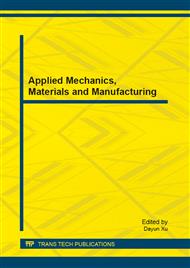p.51
p.55
p.61
p.65
p.69
p.74
p.82
p.87
p.91
The Effect of Belly-Flap on Aerodynamic Performance of Blended Wing Body Civil Aircraft
Abstract:
The effect of Belly-flap on aerodynamic performance of BWB civil aircraft are investigated in take-off and landing by computational fluid dynamics. And the overload of BWB with Belly-flap also is calculated in the same flight condition. Six parameters are discussed as design parameters of the Belly flap. It is shown that the proper combination of design parameters of Belly-flap can increase the maximum of lift and reduce the angle of attack and nose down moment to improve the flight safety in take-off and landing. When the aircraft with Belly-flap encounters the gust, the maximum overload is very close to 2.5 which are requested by FAR. It is suggested the optimized design of Belly-flap should be done if the Belly-flap is applied in BWB civil aircraft.
Info:
Periodical:
Pages:
69-73
Citation:
Online since:
August 2013
Authors:
Keywords:
Price:
Сopyright:
© 2013 Trans Tech Publications Ltd. All Rights Reserved
Share:
Citation:


